Reclaim Your Real Life:
Why Your Phone Can’t Compete With Actual Living

There’s a quiet revolution happening, and it starts with sliding your phone into your pocket instead of clutching it in your palm. Young adults today stand at a crossroads between two worlds: the carefully curated digital universe and the messy, beautiful reality waiting just beyond the screen. The choice you make might define your generation’s legacy.
We’ve all fallen into the scroll hole – that strange twilight where minutes evaporate as we swipe through other people’s lives. But here’s what they don’t tell you: every minute spent passively consuming is a minute you’re not actively creating your own story. Your phone shows you polished versions of reality, while stealing your chance to live the unedited version of your own life.
The constant comparison game we play on social media is rigged from the start. You’re measuring your behind-the-scenes against everyone else’s highlight reel, your private struggles against their public triumphs. It’s no wonder so many young people feel like they’re falling behind while standing still. But this perceived inadequacy isn’t real – it’s manufactured by the very platforms claiming to connect us.
Physical activity with friends offers the antidote to this digital disillusionment. When you’re shooting hoops with friends, your focus narrows to the satisfying swish of the net, the friendly trash talk, the shared laughter as someone dramatically misses an easy shot. These are moments that can’t be filtered or faked. The sweat on your brow and the ache in your muscles become proof of living rather than evidence of lack.
There’s neuroscience at work here that your phone can’t replicate. Face-to-face interactions trigger the release of oxytocin – the bonding hormone that makes inside jokes land harder and shared accomplishments feel sweeter. Physical activity floods your system with endorphins that no amount of scrolling can match. These biological responses evolved over millennia to reward real human connection and achievement, not digital approximations.
Consider how differently you feel after two hours spent hiking with friends versus two hours scrolling through feeds. One leaves you energized with stories to tell and the muscles pleasantly tired. The other often leaves you drained, with nothing tangible to show for your time beyond a stiff neck and vague sense of dissatisfaction. The contrast couldn’t be more stark.
This isn’t about rejecting technology altogether – that’s neither practical nor desirable. It’s about recognizing when your tools start using you instead of the other way around. Your phone should be a gateway to experiences, not a substitute for them. The healthiest digital diet includes large portions of real-world interaction with only occasional snacks of screen time.
The coming weekend presents a perfect opportunity to reset. Instead of documenting your life for others, try living it for yourself. Organize a pickup game at the local court. Suggest a group hike to that spot everyone talks about but never visits. Host a board game night where the only screens present are keeping score. Notice how these activities create natural pauses in conversation that feel comfortable rather than anxious – spaces where you can simply be rather than perform.
There’s an undeniable magic that happens when young people come together in physical space. Ideas spark differently when you can see someone’s eyes light up with excitement. Connections form more deeply when you share actual experiences rather than just reacting to posts. These are the moments that will populate your memory banks years from now, not the hours you spent staring at glass rectangles.
The digital world will always beckon with its endless novelty and engineered engagement. But the physical world offers something more precious – the chance to know yourself through action rather than appraisal, though experience rather than comparison. Your phone can show you a thousand versions of success, but only real life lets you define and achieve your own.
As you move through your week, pay attention to where your energy flows. Notice when you feel most alive, most connected, most like your authentic self. Chances are, it won’t be during your longest scrolling sessions. The activities that light you up are clues to the person you’re becoming when no one’s watching -and that person is far more interesting than any profile could capture.
So, here’s to more sun on your face than light in your eyes. To more high fives than heart reacts. To more scraped knees than screen time. Your future self will thank you for every real moment you created instead of consumed. After all, no one ever lay on their deathbed wishing they’d spent more time scrolling – but many wish they’d spent more time truly living.
The ball’s in your court - literally. Who’s up for a game?
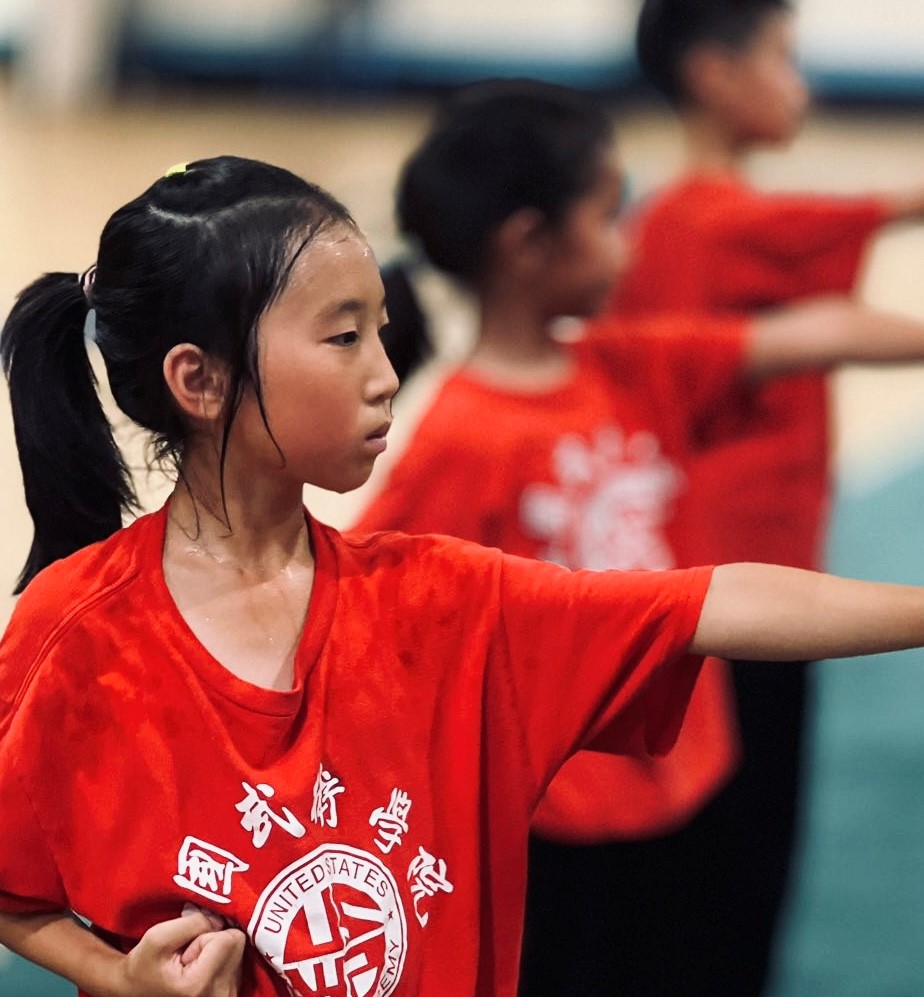
What Does a Champion Mean to Me?
Winning It All:
How Hard Work, Humility, and Heart Define a True Champion
Becoming a champion isn’t about talent – it’s about the grind, the grit, and the attitude you bring every single day. Whether it’s sports, academics, arts, or any other passion, reaching the top takes relentless effort. But what separates a true champion from just a winner isn’t just skill – it’s character. The way you work, the way you win, and the way you carry yourself afterward matter just as much as the trophy.
No one wakes up a champion. Success is built in the unseen hours – early mornings, late nights, and all the time you pushed through when no one was watching. There will be days when you’re exhausted, when progress feels slow, or when self-doubt creeps in. But champions don’t quit. They show up, put in the work, and trust the process.
Hard work isn’t glamorous, but it’s non-negotiable. Every drill, every practice, every failure is a step closer to greatness. The difference between good and legendary isn’t luck – it’s dedication.
Winning feels amazing, but how you handle success says everything about you. The best champions don’t let victory go to their heads. They stay grounded, remembering the people who helped them get there – coaches, teammates, family, and even rivals who pushed them to be better.
Humility isn’t weakness – it’s strength. It’s knowing you’re never too good to learn, too great to thank others, or too successful to stay kind. Arrogance might get attention, but respect? That’s earned through grace.
When you win, people notice – especially younger competitors who look up to you. What will they see? Someone who brags and puts others down? Or someone who wins with class, uplifting teammates, and stay true to their values?
Being a champion isn’t just about being the best – it’s about setting the standard. It’s showing that real winners work hard, stay humble, and lift others up along the way.
Trophies collect dust, but the way you impact others lasts forever. The greatest champions aren’t just remembered for their skills – they’re remembered for their heart. So, chase your dreams, put in the work, and when you reach the top, pull others up with you.
Because at the end of the day, being a true champion isn’t about the title – it’s about the person you become in the process.

Two Modes of Consciousness: Awareness & Illumination
We often hear about mindfulness, focus, and “being present,” but ancient philosophies offer a deeper framework to understand how our minds work. Among these is a distinction between two powerful mental states: awareness (觉,jué) and illumination (照,zhào). These are not just abstract ideas, they are practical tools for navigating thoughts, emotions, and daily life.
Awareness (觉): The Art of Laser Focus
Imagine shining a spotlight in a dark room. Whatever it touches becomes clear, while the rest fades into shadow. This is how “awareness” works. It is the mind’s ability to zero in on one thing at a time, a skill often lost in our multitasking world.
Awareness is not passive. It is an active choice to observe a single, intentional thought or sensation. For example:
· Focusing on your breath during meditation.
· Noticing a repetitive worry and asking, “Is this thought helpful?”
· Immersing fully in a creative task, like writing or painting.
Ancient texts describe this as “惟精惟一” (wéi jing wéi yi), a state of “refined singularity.”
Think of it as mental decluttering: by directing energy to one point, you gain clarity and reduce mental noise.
Illumination (照): The Quiet Power of Effortless Presence
Now, imagine the same dark room flooded with sunlight. Everything is visible at once, no effort, no selective focus. This is “illumination”. Unlike awareness, which narrows, illumination expands. It is a high-energy state where the mind naturally harmonizes with its surroundings.
Illumination is not about “doing”; it is about “being”. You might experience it:
· During “flow states,” where work feels effortless.
· In moments of awe, like watching a sunset.
· When you feel deeply connected to others without overthinking.
The term “向下兼容” (xiàng xià jiañ róng), often used in tech to mean “backward compatibility”, aptly describes illumination. It is a state that encompasses and harmonizes all other mental states, like a calm lake reflecting the sky.
Why the Distinction Matters
Awareness and illumination are not opposites, they are partners. Here is how they work together:
· Awareness trains the mind: By practicing focused attention (awareness), you strengthen mental discipline. This prepares you to access illumination, which requires letting go of control.
· Illumination heals the mind: When overthinking of stress dominates, illumination’s broad, accepting energy helps reset your mental state.
Think of it like training for a marathon. Awareness is the daily discipline of running drills; illumination is the race-day “zone” where your training effortlessly takes over.
How to Apply this Today
1. Start with awareness: Pick one task today, even something simple like drinking tea, and focus on it fully. Notice details (temperature, aroma, texture) without judgment.
2. Invite illumination: After a focused task, pause. Let your mind relax into open observation. Breathe deeply and notice how your body and environment feel as a whole.
3. Alternate intentionally: Use awareness to tackle complex problem, then switch to illumination to recharge.
Final Thought: Beyond “Good” and “Bad” States
Modern life often glorifies constant productivity (a form of hyper-awareness) or numbing distraction (a collapse of both awareness and illumination). By understanding these two modes, we can move beyond guilt or frustration. Some moments call for sharp focus; others demand soft presence. Mastery lies in knowing which tool to use, and when to simply let go.The goal is not to “achieve” illumination or “perfect” awareness. It is to recognize that both are already within you, waiting to be harnessed. As the ancients might say: A spotlight reveals the path; sunlight reveals the world. Choose wisely.

Motivation vs. Self-Discipline: What’s the Difference and Why You Need Both
If you’ve ever set a goal—like getting fit, acing a class, or starting a side hustle—you’ve probably heard about motivation and self-discipline. But what’s the difference, and why do you need both? Let’s break it down in a way that makes sense for your life.
What is Motivation?
Motivation is that spark that gets you excited to start something new. It’s the feeling you get when you’re pumped to hit the gym, learn a new skill, or crush a project. Motivation can come from inside you (like wanting to feel proud of yourself) or from outside (like wanting to impress someone or earn a reward).
But here’s the catch: motivation doesn’t last forever. That initial excitement can fade when things get tough, boring, or overwhelming. That’s where self-discipline comes in.
What is Self-Discipline?
Self-discipline is what keeps you going when motivation runs out. It’s the ability to stick to your plan, even when you don’t feel like it. For example:
- Going to the gym even when you’re tired.
- Studying for an exam instead of scrolling through TikTok.
- Saving money instead of splurging on something you don’t need.
Self-discipline isn’t about feeling excited—it’s about staying committed, no matter how you feel. It’s what separates people who achieve their goals from those who give up.
Motivation vs. Self-Discipline: What’s the Difference?
- Motivation is the *why*—it’s the excitement or passion that gets you started.
- Self-discipline is the *how*—it’s the consistency and effort that keeps you going.
Think of it like this: motivation is the spark that lights a fire, but self-discipline is the fuel that keeps it burning.
Why You Need Both
Motivation and self-discipline work best together. Here’s how:
1. Motivation gets you started: It gives you the push to take that first step.
2. Self-discipline keeps you going: It helps you stay on track, even when you hit obstacles or lose interest.
For example, motivation might inspire you to start a workout routine, but self-discipline ensures you stick to it, even on days when you’d rather stay in bed.
Why Self-Discipline is a Game-Changer
Motivation is great, but it’s not reliable. It comes and goes depending on your mood or circumstances. Self-discipline, on the other hand, is a skill you can build and rely on, no matter how you feel. It’s what helps you push through challenges and keep moving forward, even when things get tough.
How to Build Self-Discipline
If you’re not naturally disciplined, don’t worry—it’s a skill you can develop. Here’s how:
1. Start small: Set tiny, achievable goals (like studying for 20 minutes a day) and build from there.
2. Create habits: Turn actions into routines, like working out at the same time every day.
3. Stay consistent: Focus on doing a little bit every day instead of relying on big, occasional efforts.
4. Remove distractions: Identify what’s holding you back (like your phone) and find ways to stay focused.
5. Reward yourself: Celebrate small wins to keep yourself motivated.
The Bottom Line
Motivation and self-discipline are both essential for success. Motivation gets you started, but self-discipline keeps you going. Together, they help you turn your goals into reality. So, the next time you’re feeling pumped to start something new, remember: motivation lights the fire, but self-discipline keeps it burning. Build both, and you’ll be unstoppable.

The Poem
A poem I read 55 years ago affected my view on life. As I mature, each time I read this poem, my understanding changes. The verses of this ancient poem are not mere words but gentle whispers from the past, offering guidance for living with grace, humility, and resilience. To uncover the compassion and depth hidden within its simplicity.
The Poem
Do not speak of other’s faults
Do not boast of your own merits.
When giving, do not dwell on it,
When receiving, never forget.
Worldly desires are not worth coveting,
Only human virtues uphold order.
Act only after reflection-
How can slander harm you?
Let not fame exceed truth,
Guarding simplicity is the sage’s treasure.
In darkness, value remains unstained,
Dim yet holding inner light.
The soft and weak are companions of life,
Laozi warned against rigidity.
To rise above the vulgar mind-
Such depth defies measure.
Be cautious in speech, temperate in meals,
Contentment wards of misfortune.
If you persist in action,
Fragrance will linger in time.
Finding Serenity in the Chaos: Timeless Wisdom from an Ancient Poem
Life is like a vast ocean, sometimes calm and serene, sometimes turbulent and stormy. How can we maintain inner peace amid the noise and distraction of the world? A nameless poem from two thousand years ago offers enduring life philosophy through simple yet profound words. It does not teach us to conquer the world but guides us to look inward, to live authentically through humility, moderation, and perseverance, allowing the true fragrance of life to blossom.
The power of Silence over a Thousand Words
“Do not speak of other’s faults; do not boast of your own merits.” These lines may seem straightforward, yet they form the foundation of harmonious relationships. We often seek validation by comparing ourselves to others or judging their shortcoming, only to lose our peace in the process. Try letting go of the urge to dwell on others’ flaws or measure your worth through external eyes. True strength comes from focusing on your own path, not racing to outpace others. Like a mountain stream flowing through rocks, it does not clamor against obstacles but gathers strength silently, eventually pooling into a deep, tranquil pond.
To Give and Receive: Gift of Life
When helping others, do not tally your generosity; when receiving kindness, hold gratitude close. This is not a call to sainthood but a reminder: balance in giving and receiving allows relationships to breathe naturally. When we shift our focus from “what have I gained?” to “what can I offer?”, the sense of scarcity within begins to fade. Just as soil nourishes seeds without demanding flowers in return, generosity thrives when unburdened by expectation.
Guarding the Inner Light in a Chaotic World
The world tempts us to chase fame, wealth, and fleeting trends, yet the poem whispers: “Worldly desires are not worth coveting; only human virtues uphold order.” External noise may cloud our vision, but what truly matters, integrity, humility, sincerity, can never be dimmed by darkness. Like jade buried deep in the earth, even in mud, it retains its warm, unblemished glow.
Softness: The Strongest Path to Resilience
Laozi taught, “The soft and weak are companions of life.” This is not a call to weakness but an invitation to bend like reeds in the wind rather than snap like rigid branches. In conflict, release the urge to fight; in hardship, allow yourself to yield temporarily. True courage often lies in sincere apology, a gracious compromise, or the quiet acceptance of life’s ebbs and flows.
Time Rewards Steadfastness
“If you persist in action, fragrance will linger with time.” We crave instant results, yet underestimate the power of small, consistent habits. Ten minutes of morning reading, an extra kind word to a loved one, a moment of focus at work, these seemingly ordinary acts, when nurtured daily, will one day bloom into something extraordinary. Like wild orchids in the mountains, they grow unseen year after year until their subtle fragrance fills the entire valley.
The answers to life may lie within the lines of the ancient poem: there is no need to rush to prove yourself or be shackled by others’ judgments. When we learn to cultivate silence, embrace flexibility, and persevere in simplicity, we discover that the most profound beauty is not chased but naturally revealed, a quiet radiance the flows from the soul.

Why We Compete
Competition doesn’t have to be solely about winning—it can also be a way to build friendships, learn from others, and grow together. When we approach it with kindness, respect, and a focus on shared experiences, competition becomes more than just a contest; it becomes an opportunity to connect with others on a deeper level.
Through competition, we encounter people with different perspectives, skills, and approaches. These differences can teach us new ways of thinking and help us appreciate what makes each person unique. By exchanging ideas and supporting one another, we can turn rivals into friends and create meaningful bonds.
Respect is the foundation of any strong relationship. When we celebrate others’ efforts, offer encouragement during tough moments, and acknowledge their achievements, we build trust and camaraderie. This mutual respect transforms competition into a positive experience where everyone feels valued.
Some of the best memories come from shared experiences—whether it’s the thrill of a close match, the satisfaction of overcoming a challenge, or the lessons learned from a loss. These moments create stories that bring people together, forming friendships that last long after the competition ends.
To make competition more about connection, we should prioritize kindness and collaboration. Leaders, coaches, and peers can set the tone by emphasizing sportsmanship and celebrating effort, not just results. Spending time together outside of the competition—whether through team activities or casual hangouts—can also strengthen relationships and foster a sense of community.
At its core, competition is about more than just winning. It’s about learning, growing, and building relationships. When we compete with respect and a spirit of friendship, we create an environment where everyone can thrive—and where rivals can become lifelong friends.
When rooted in friendship and respect, competition becomes a celebration of humanity. It reminds us that we’re all on this journey together, each with something valuable to contribute. The true victory lies not in outshining others but in shining together, forging friendships that enrich our lives.
 The Art of Yongxin: Cultivating Life’s Gardens with Heart
The Art of Yongxin: Cultivating Life’s Gardens with Heart
In the quiet spaces between our hurried routines, there exists a Chinese concept that holds the secret to lasting relationships, meaningful work, and personal growth. It is called “Yongxin” (用心), literally “to use one’s heart”, but its essence runs far deeper than words can capture. Yongxin is not merely effort; it is the alchemy of infusing ordinary moments with extraordinary care, transforming duty into devotion, and tasks into acts of love.
Imagine tending a garden. Yongxin is the difference between mechanically watering plants and keeling in the soil, noticing which leaves need sunlight, which buds are ready to bloom, and which roots crave nourishment. This is how we preserve relationships: not through a grand gesture, but through the daily practice of seeing and cherishing the humanity in others. A partner who remembers how you take your tea after a long day. A friend who listens not just to respond, but to understand. A parent who writes your favorite childhood recipe in shaky handwriting before it is forgotten. These are acts of Yongxin, quiet, consistent offerings of the heart that say, “You matter.”
In our work, Yongxin turns jobs into callings. It is the teacher who stays late not because she must, but because she notices the student hiding behind slumped shoulders. It is the barista who crafts your latte with the care of an artist, turning foam into a fern leaf just to spark joy. Yongxin asks us to ask ourselves: “Am I building something, or am I becoming someone?” When we work with heart, even spreadsheets become love letters to precision, and customer service becomes a dance of empathy. Success, then, is no longer measured in promotions alone, but in the invisible threads of trust and dignity we weave.
Yet the most profound application of Yongxin is the stewardship of our own becoming. To improve oneself with heart is to approach personal growth not as a ruthless self-overhaul, but as the tender cultivation of a bonsai tree. It requires patience with tangled roots, curiosity about crooked branches, and the wisdom to know that even scars can shape beauty. A young father learning to apologize to his child, a recovering perfectionist allowing herself to create “good enough” art, a retiree discovering poetry in his late 70s, these are journeys of Yongxin. They remind us that transformation is not about fixing brokenness but honoring the raw material of our humanity.
This path is not without its stumbles. Yongxin acknowledges that we will forget anniversaries, miss deadlines, and fall short of our ideals. But here lies its radical kindness: it asks not for perfection, but for presence. A heartfelt “I am sorry” carries more weight than a flawless record. A single mindful conversation outweighs years of distracted chatter. The cracks in our efforts, like the golden seams of Juchi (锔瓷) pottery, become testaments to our willingness to try again.
The world often tells us to hustle harder, optimize faster, and demand more. Yongxin whispers a different truth. “Go slower. Look closer. Love deeper.” It is the antidote to burnout, the bridge between strangers, and the compass for self-discovery. When we approach life with this quality of heart, we begin to notice miracles hidden in plain sight, the resilience of a dandelion pushing through concrete, the courage in a colleague’s vulnerable question, the grace of our own breath steadying itself after tears.
So let us practice Yongxin as a daily ritual. Let us chop vegetables with gratitude for the hands that grew them. Let us write emails imagining the recipient’s humanity. Let us confront our flaws not with scorn, but with the gentle curiosity of a gardener studying unfamiliar soil. For in the end, a life lived with heart is not about achieving greatness, but about becoming a sanctuary, for others, for our work, and for the ever-unfolding mystery of who we are.
The invitation is simple but profound: Whatever you do today, do it with Yongxin. Let your heart lead. The rest will follow.
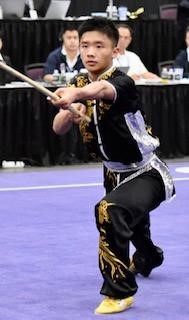
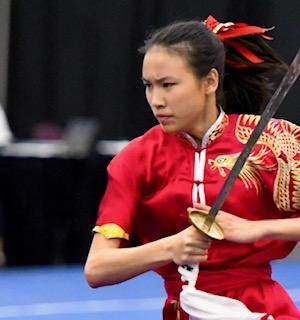
Willpower, What Is It?
Willpower by definition is the ability to resist short-term temptation in order to meet long-term goals.
The past two years, during the COVID-19 pandemic, was the time to test one’s willpower. I would like to share this true story with you and hope you are as motivated by it as I am.
At the beginning of the pandemic, like everyone else, our classes were forced into the virtual world. Training at home with very limited space, students could only practice techniques that their home environment allowed, which wasn’t a lot. As time went on not being able to practice more dynamic techniques, many students became bored with the more repetitive techniques. They began to drop out of training.
In those days, I kept asking myself how I could thrust strength upon my students to keep them training. I adjusted my teaching methods. I altered my routines to keep them interested, but not very successfully.
I understood that it is not just physical change that makes a person strong. Strength can also come from a psychological reaction to an internal conflict, in this case, the temptation to quit from boredom.
In the past 44 years of my teaching profession, being able to produce world class Wushu champions has been satisfying, but my real happiness comes from shaping and creating students to have compassionate hearts with upright character and unbendable willpower.
I have found that those students who have this unbendable willpower all have these traits in common: they have a clear goal in mind; they keep up with the scheduled routine; and when things get tough, they get more determined to continue with their goal.
This year, Tony Wang, Joanne Li, Anya Crowl, Abby Mintzer and Liam Brown went to Texas for the US Junior Team Trials. This year’s team trials had more than double the number of competitors than previous years. Maybe it was the pandemic. Everyone had been isolated for two years, then suddenly, the door was opened, and everyone rushed to Texas for the team trials. The US National Team consists of three age groups and to be in the US National Team, you have to be one of the top six athletes in your age group. Only the top two athletes in each age group will represent the US in the next international championship.
Two years ago, Tony Wang and Joanne Li were junior team members in the US Wushu Academy. While the more experienced and senior team members dropped out of training, these two persisted and pressed on. Two years is a long time for anyone who doesn’t have willpower. The result was that Tony Wang placed first, and Joanne Li placed second. They are going to represent the US in the 8th World Junior Wushu Championship on December 2-10, 2022 in Indonesia.
I know they will do their best and treasure this once in a lifetime experience.
After the team trial, the perception of the three younger members, Anya Crowl, Abby Mintzer and Liam Brown’s has changed. They now train with much more motivation. I know their consciousness has been opened up. I am grateful and happy.
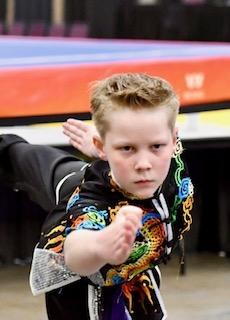
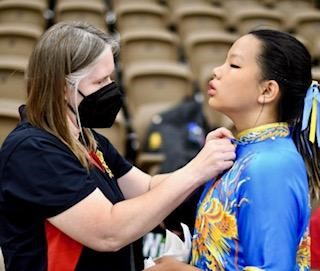
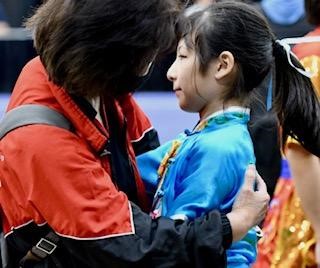
The Alchemy of Feeling: Finding Wholeness in Life’s Contrasts
There’s a quiet truth hidden in the objects we cherish most. The coffee mug you cradle each morning, its glaze smooth under your palms, was once soft clay hardened by fire. The guitar that breathes life into your quiet evening first had to be hollowed out with sharp tools. These ordinary miracles remind us: beauty often emerges not despite life’s trials, but because of them.
Consider the cup mentioned in your hands. Before it could hold your tea or wine, it endured the kiln’s blistering heat. The very fire that threatened to destroy it becomes the force that solidified its purpose. Our hearts work in similar ways. Those searing moments of loss, rejection, or disappointment, the ones that made you whisper, “I can’t bear this” – are shaping you into a vessel capable of holding profound joy. The cracks you fear are flaws? They’re where the light gets in, and where your deepest wisdom will eventually pour out.
Now think of the lute. Its haunting music depends on the emptiness carved into its frame. Without that hollow space, created by chiseling away what once seemed essential, there would be no resonance, no song. Our lives echo this truth. The spaces left by what we’ve lost, failed relationships, abandoned dreams, faded youth, aren’t voids to fear. They’re sacred chambers where life’s music gains depth and richness. What feels like emptiness now may soon amplify your laughter, deepen your love, and voice strengths you didn’t know you carried.
This is the paradox of being human: our greatest joys are often refracted through the prism of past sorrows. The job that fulfills you today? Its satisfaction is sweeter because you once tasted uncertainty. The love that steadies you? Its warmth feels brighter against the memory of loneliness. Even the quiet peace you feel on ordinary mornings is heightened by nights when peace felt impossible.
But balance isn’t about denying pain or chasing constant happiness. It’s about learning to hold both with tenderness. When joy comes, and it will, let yourself dive into its depths without guilt. And when sorrow visits, as it does for us all, greet it not as an enemy, but as a stern teacher. Wrap your arms around the full spectrum of your humanity, knowing that: the same heart that breaks open becomes more capable of profound love; the mind that wrestles with doubt develops truer wisdom; the spirit that weathers storms discovers unshakable resilience.
Next time you feel overwhelmed by life’s contrasts, try this: place your hand over your heart and breathe into the space where joy and sorrow meet. Feel the pulse that persists through both. Remember, you are not being punished by hard times or rewarded by good ones. You’re being sculpted into someone who can appreciate the full, messy, glorious spectrum of what it means to truly live.
The cup’s beauty and the lute’s song remind us: You are not ruined by what you’ve endured. You’re being made into a sanctuary, for music, for warmth, for stories only you can hold. Trust the process. The kiln’s heat will cool. The carving tools will rest. And what remains will be more breathtaking than you ever imagined, not in spite of the marks life left, but because of them.
After all, the most radiant sunsets require both light and darkness. Your soul’s brilliance is no different.

Continuity: Master of the Pen and the Sword Wén Wŭ Shuāng Quán 文武双全
When we look at the symbols for Yin and Yang, we see that they represent a state of constant change. When we are faced with changes, we have to learn to keep a very clear mind.
In our Taiji practice, if any part of our body changes or a movement is adjusted or the path changes and we don’t pay attention, it will cause an imbalance in our whole body. All changes have to be carefully looked at to determine how we want to adjust ourselves mentally and physically.
Every little change will affect the whole body. If you sit in an airplane in business class it feels different than if you sit in economy class because the chair size affects the body. That’s a physical change because the chair is different. There are also mental changes. If you have a crying baby sitting near you on the plane, you also have to make adjustments. Sometimes the changes that affect us are things that we can do something about. In that case, we can balance ourselves to adapt to the change. Sometimes there are changes that we cannot do anything about, like the baby crying. There’s nothing that can be done about that, so we need to make a mental adjustment to accept that it is part of the world that we have to balance at that moment. That’s the thing about change. Change isn’t always about forcing a difference to happen. Some changes are physical, some mental, some situational, but in all of them we can make adjustments.
This continuity practice is meant to get you away from doing Taiji mechanically. Once the body becomes mechanical, our mind is no longer being used. It really doesn’t achieve the very first goal in our practice, which is to have good spirit. “Lifting the head to raise the spirit” is our first goal in Taiji practice. Doing it mechanically is like running on the treadmill, where you just run without thinking of anything else, like a lab rat.
When you do this practice, you have to think. Your mind thinks, Qi moves, then body moves – that’s the sequence. We don’t just say, “I move the body”. You can move the body, but Qi needs to guide it. Qi can never move where the body wants it to unless you have looseness and tension that pumps the Qi. But it would be better if your mind guided the Qi to say “This is what I want you to do”. The mind has to be awake and alert. The body moves with calm emotions and a clear mind. Clear doesn’t mean that it’s under tension all the time. It’s clear. The mind says. “Okay, we need to take a break”. The mind says, “I need to be sharp”. The mind says, “I need to be sensitive”. The mind says, “Now I would like to see this movement complete”. Everything is in the mind first.
I gave you this exercise to release you from doing the same routine without thinking. We never want to be people who can only use muscle but not use the mind. In Chinese culture, there is an ancient saying: “A person has to be able to pick up a sword to fight, at the same time has to be able to pick up a pen to write”. In Chinese this is called: 文武双全 wén wŭ shuāng quán. That’s the definition of a perfect person. This is someone who can face great dangers, violence and fighting and at the same time can sit down and write poetry. The mind needs to keep active and be sharp all the time. That’s why I gave you this drill. I want you to become better rounded and more alive.
 The Unyielding Spirit: How Greatness Rises From the Ashes of Failure
The Unyielding Spirit: How Greatness Rises From the Ashes of Failure
In the quiet moments between our triumphs, there exists a truth often whispered but rarely embraced: greatness is not born in the flawless execution of plans, but in the quiet persistence that follows defeat. Consider the oak tree, its strength forged not in calm summers, but in decades of bending through storms. So, too does human greatness grow not from an absence of failure, but from the courage to keep reaching skyward when every branch feels broken.
History’s most luminous figures share an unglamorous common thread, their stories are stitched with setbacks. Imagine the first time Marie Curie’s experiments dissolved into smoke, or the early manuscripts of now celebrated novels that littered publisher’s rejection bins. Even nature itself teaches this lesson: rivers carve canyons not through relentless force, but by persistently flowing around obstacles. Failure, it seems, is not life’s antagonist but its most demanding mentor.
The myth of the “overnight success” crumbles under scrutiny. Behind every breakthrough lies a hidden tapestry of abandoned prototypes, silent doubts, and recalibrated dreams. A chef burns countless meals before mastering the perfect soufflé. A musician fumbles through discordant notes before composing harmony. These “failures” are not dead ends, but breadcrumbs left by our former selves, making a path to wisdom. What appears as stumbling is actually the human spirit learning to dance with adversity.
Modern culture often treats missteps as shameful secrets, yet the most transformative journeys reframe them as sacred text. Consider the ceramics student told to create two pots: one perfect, the other intentionally flawed. Paradoxically, the “imperfect” pot often becomes the artist’s masterpiece, its irregularities revealing unexpected beauty. Our lives mirror this creative process. That career setback becomes the catalyst for reinvention. The relationship that fractured teaches emotional resilience. Each stumble writes a new verse in our evolving story of perseverance.
Resilience is not about gritting teeth through pain, but about developing the vision to see beyond it. When the Wright brothers’ early prototypes crashed, they didn’t see broken machines, they saw airborne lessons. Every “no” carries the blueprint for a better “yes.” Every closed door echoes with directions to any open window. The art lies not in avoiding falls, but in learning how to land, and what to gather when we rise.
This tenacious spirit thrives in ordinary lives as much as history books. The single parent working nights to earn a degree. The immigrant rebuilding a career in an unfamiliar tongue. The artist painting through self-doubt. Their greatness emerges not despite their struggles, but because of them. Like charcoal under pressure transforming into diamonds, humans under challenge develop facets of strength invisible during easier times.
Society’s most enduring legends share a common refrain: “And still, they persisted.” Beethoven composed symphonies as deafness encroached. NASA engineers turned Apollo 13’s potential tragedy into a triumph of ingenuity. These stories resonate because they mirror out private battles, that silent determination to show up after life’s blows.
To those feeling weathered by failure: your scars are not signs of defeat but medals of courage. Each crease in your resolve marks where you folded experience into wisdom. The world needs not flawless performers but imperfect warriors, those who’ve stared at broken plans and whispered, “What if we try this instead?”
Greatness is not a summit reached by the unblemished, but a mosaic crafted from shattered expectations and relentless hope. So, when you next stumble, remember: the earth’s most fertile soil is made from ancient ruins. Your failures are not tombstones but compost, nourishing the ground for what’s yet to grow. Keep tending your garden. The world awaits your blossoming.
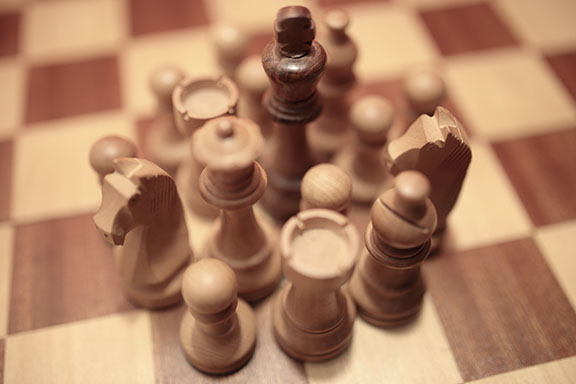
Continuity Level Three: No Pattern, No Set Technique
The first level of Continuity is where you have a set technique and a set pattern of movement. The second level is to have a set technique but with no pattern. The third level is to have no pattern and no set technique. Using all the knowledge that we have, we can choose a technique to get ourselves out of a situation. Once we get out of that problem, we can go back to working on the next technique.
The Art of War and the Taiji Principles are all about dealing with change. The only thing that is constant is change. You might have to do something different to get back to normal or to get back to the way that you wanted to do things. This is in your mindset. Your goal today might be to practice Brush and Push. But now you might find yourself in a bind, so your mind draws on the other things that you know to help you get out of it. Once you’re back on track, you can return to your intended practice.
Life is very tough right now. We might have to do some things differently than we’d like, but our goal is to get ourselves back on track. That’s our goal. I wanted to share this idea of Continuity with you today. Don’t step back. Try to figure it out. Take your time. There is no time limit for self-improvement; we improve ourselves a little bit every day. Every change we make changes us over time. Don’t rush. We must be patient with ourselves.

The Awakening Within: How Lasting Change Begins in the Heart
There is a quiet miracle that happens inside every person who has ever made meaningful change in their life. It starts not with a dramatic event or outside force, but with a simple yet profound moment of awareness, that first spark of recognition when we truly see ourselves and decide, “I want to grow.”
Like a seed breaking open to reach for the sun, real transformation begins with an inner stirring we can’t ignore. The outside world might water us with advice, or bend us with pressure, but the true magic happens when something inside wakes up and says, “This is who I could become.” Maybe it comes while reflecting on a past mistake that suddenly makes sense, or when imagining a future version of ourselves that feels more alive. Sometimes it’s just a gentle but insistent voice reminding us, “You matter too.”
These moments of awareness are sacred gifts we give ourselves. When we pause long enough to listen to our own heart, to really hear our deepest hopes and quietest truths, we plant the seeds of lasting change. The parent who realizes they want more patience, the worker who discovers their untapped creativity, the friend who decides to set healthier boundaries, each begins with that inner knowing.
What makes this kind of change so powerful is that is doesn’t feel like punishment or deprivation. It feels like coming home to yourself. When we change from this place of awakened awareness, we’re not being forced, we’re being freed. The habits we release, the new paths we choose, these aren’t punishments from the universe but love letters to our future selves.
So, if you find yourself longing for something more today, don’t rush to fix everything at once. Start by listening. That quiet voice inside you already knows the way. Your job isn’t to force the growth, but to create the conditions for it, with kindness, with courage, and with the unshakable belief that you are worth becoming.
The most beautiful changes in life aren’t those we’re pushed into, but those we choose from that sacred place of knowing. When your heart wakes up and says, “It’s time,” trust it. That’s not just you wanting to change, that’s the real you already beginning to bloom.
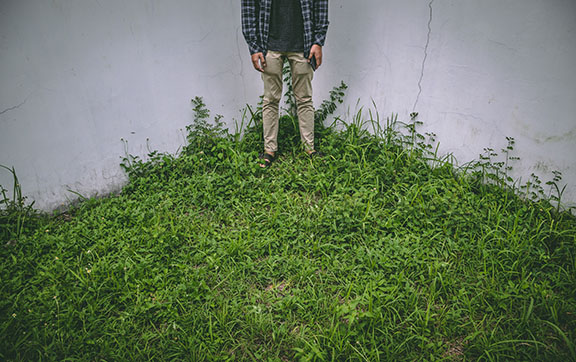
Continuity Level Two: No Pattern
The next level is to have no pattern. What do I mean by no pattern? First we have to look at our feet. In both of these moves, you can change direction depending on the direction you turn your front foot. When you rotate your front foot outward about 45 degrees, you can safely move straight forward. Don’t open more than that or you’ll hurt your knee. If you rotate your front foot inward 45 degrees, you can move your body in a 90-degree turn to your original right side. If you rotate your foot inward 90 degrees, you can move your body to your original back side diagonally. And if you close your foot 135 degrees, you can turn all the way around, in an 180-degree rotation to your back side. First we must understand how to do this. Then we can continue with our freestyle “no pattern” practice.
When you practice with no pattern, your mind becomes sharp and it opens to everything around you while you are still focusing on the move. That’s the second level of practice. You can practice the pattern to improve your technique but with no pattern, you have to see everything. Your sensitivity has to open up. The feeling will be completely different. When you do it with a pattern, your feeling goes inward. When you do it with no pattern, your mind goes inward at the same time as it goes outward. This creates a dual feeling that requires you to find balance.
When we practice this continuity exercise in a limited space, we have to think ahead to do our best to not get stuck in a corner. If that happens, our mind does not grow, our feeling doesn’t grow, and our sensitivity doesn’t grow. If you are forced into a corner, you have to think of how to move yourself out of this situation. Don’t just step back out of the situation. That won’t help you develop your skill of seeing the upcoming path. Think about what options you have before you move and your skill will grow.
 The Joyful Art of Whistling Through Life’s Storms
The Joyful Art of Whistling Through Life’s Storms
Life has a wonderful way of keeping us on our toes, much like a kettle left too long on a hot stove. There we are, minding our own business, when suddenly the heat turns up-the water boils, the steam rises, and we face that critical choice: do we let out an angry hiss or a cheerful whistle?
The secret to happiness, it turns out, isn’t avoiding the fire-it’s learning to sing through it. Think about that trusty teapot in your kitchen. Day after day, it withstands the flames, the scalding water, the occasional neglect when we forgot to turn off the burner. Yet, when the pressure builds, it doesn’t grumble or groan-it whistles a bright, clear note, as if to say “Yes, things are heating up, but isn’t it wonderful to be alive?”
We’ve all had those moments when life feels like a chaotic cooking show gone wrong. Just when we think we got the recipe figured out, fate tosses in an unexpected ingredient-a flat tire on a busy morning, a sudden downpour on picnic day, a computer crashes right before a big deadline. In those moments, we can either panic like a soufflé in an earthquake or take a deep breath and channel our inner teapot, choosing melody over misery.
What makes the whistling kettle philosophy so powerful is that it doesn’t ignore the heat-it embraces it. When life’s water starts boiling, we can let off steam in healthy ways, whether that’s belting out our favorite song in the shower or laughing at the absurdity of it all with a good friend. We can remind ourselves that today’s small disasters will become tomorrow’s most cherished stories-the time we tripped in front of a crowd only to be helped by a kind stranger, or the “brilliant” idea that failed spectacularly but taught us something invaluable.
Perfection, after all, is highly overrated. A flawless life might look nice in pictures, but it’s the little burns and scars that give us stories depth and flavor. The slightly crooked cake, the mismatched socks, the wrong turn that led to an unforgettable adventure-these are the moments that make life rich and real.
Here’s the beautiful truth: everyone gets put on the burner sometimes. What separates a life well-lived from one spent simmering in frustration often comes down to whether we choose to whistle through the experience. So, the next time life turns up the heat, take a deep breath, pucker up, and let out your most joyful sound. After all, if we’re going to be in hot water anyway, we might as well enjoy the steam facial and make some music while we’re at it.
Now, who’s ready to put the kettle on and face whatever comes our way-with a song in our hearts and perhaps a fresh batch of cookies for the journey? The water is boiling, the whistle is calling, and life, in all its messy glory, is waiting to be savored.

Continuity Level One: What Do You See?
Here is another story about archery. A teacher is teaching his pupil how to shoot. The teacher points to a tree and says, “What do you see?” The pupil says, “I see a tree”.
The teacher says, “Focus your mind. Keep looking. You’re not ready yet.” After a few minutes, the teacher asks, “What do you see now?” The pupil says, “I see a branch”. Teacher says, “Not ready yet. Focus”. After a few more minutes, he asks again “What do you see?” The student says, “I see that one leaf”. And the teacher says; “Now you are ready to shoot”. The attention needs to go from very a very general and broad area to a very focused and pinpointed target.
When we do continuity drills, your mind is not focused on doing the whole form. That’s seeing the whole tree. We are not doing the whole section. That would be looking at the branch. For this exercise, you are only looking at one leaf. You think of nothing else but these few moves. When you do these moves in a set pattern, it makes your mind not worry about where you are going to go. That’s the most basic exercise for you to train yourself in continuity. This is level one. It helps to train you to focus.

Selfless Giving
Give like the sun gives light –
not tallying beams,
not counting the days,
just shining because that is its nature.
But when moonlight finds you
on a darkened path –
hold that silver glow in your memory.
Let it pool in your palm
until you can pour it forward
for another traveler.
This is the sacred exchange:
to be both fountain and vessel,
to drink deeply from compassion
and overflow without measure.
The ledger of love
was never meant to be balanced –
only multiplied.
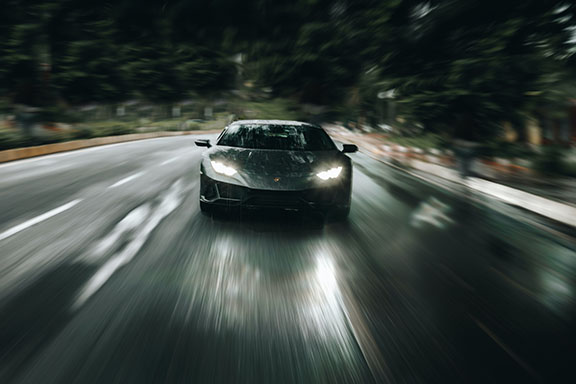
Continuity: The Mind is the Vehicle for Moving Qi
Continuity is when the body has completely finished with a move, and the mind thinks on to the next move, and the body continues to follow the mind. This is similar to the relationship of a driver to a car. The driver is the mind, the engine is the body and the gasoline is the Qi. The driver says, “I am going to move the car” and he presses the gas pedal. The pedal regulates the gasoline flow, which ultimately allows the engine to turn to create energy. If you take your foot off the pedal, there isn’t enough gas flowing, and the engine won’t turn. If the engine doesn’t turn, there won’t be enough energy created, and the car will stop moving. We have a similar relationship from our mind to Qi and to body. The flow cannot stop. Once it stops, the movements become disconnected. That’s what we don’t want. The mind controls everything and is extremely important in creating continuity in our practice.
In the past few classes, we have been focusing on individual moves. By doing this, we have gone deeper and bigger in our stances and footwork in order to challenge our bodies. When the body is stronger then you will have more energy, and then you can create more energy to use. But today, I would like you to work on continuity. When we are working on continuity, you might want to make the stance a little bit smaller. The focus is on moving continuously and you have to feel when one move is finished and it continues on to the next move without any hesitation. But the key point is you have to finish each move completely. If you don’t finish and you go on to the next move, then that move was incomplete. What controls whether you finish the move or not? It’s your mind. Your mind needs to be very clear about what you are going to do next.
The River of Life: A Journey of Constant Growth
Just as a river never stops flowing on its way to the ocean, life is a continuous journey of growth and self-discovery. This simple yet profound truth is written in the language of nature, and it speaks to all of us, regardless of where we come from.
In every stage of life, there is purpose and meaning. When we are young, we are like seedlings, eager to absorb knowledge and experience. In our prime, we grow tall like trees, reaching for our dreams. And in our later years, we become like the warm glow of sunset, sharing our wisdom and enriching the world around us.
Throughout history, great minds like Wang Xizhi (王羲之), who practiced calligraphy until his ink turned a pond black, Li Shizhen (李时珍), who spent 30 years compiling his medical encyclopedia, and Qi Baishi (齐白石), who painted daily even in his 90s, have shown us the power of perseverance and lifelong learning.
In today's fast-changing world, it's easy to feel lost or overwhelmed. But remember, there is no need to rush in youth, no need to fear change in adulthood, and no need to regret the passing of time in old age. As long as we have hope in our hearts and a path before us, life is always full of possibilities.
Life is like a river, flowing from the mountains to the sea, with unique beauty at every turn. Let us take inspiration from nature and the examples of those who came before us and never stop moving forward on our journey. This is the greatest tribute we can pay to the gift of life.
References:
1. Wang Xizhi (王羲之), https://en.wikipedia.org/wiki/Wang_Xizhi
2. Li Shizhen (李时珍), https://en.wikipedia.org/wiki/Li_Shizhen
3. Qi Baishi (齐白石), https://en.wikipedia.org/wiki/Qi_Baishi

Continuity: The Only Thing That is Constant is Change
Many times, you have heard me say that Qi is like water. Water flows where there is the least resistance. The reason why the Daoists treat water as a holy symbol is because water does not distinguish between rich and poor or good and evil. It treats everyone and everything equally. Water benefits all the things on earth equally without discrimination. When we use water correctly, everything grows and is nourished. However, if there is too much of it, everything could drown. When we practice, our main goal is to move Qi. When Qi moves, the body flourishes. But if you try to force it, saying, “I’ve got to have more Qi”, then you lose the whole purpose of why you are doing this. It’s like when you plant a tree. If you give it enough water, the plant will grow. However, if you say, “Since trees need water, I will continuously give it water without stopping”, then the water will likely kill the plant because the water was not used appropriately. The water was not used in a balanced way. When we practice, the first thing that controls our movement is the mind. My teaching for you is always: Mind moves, Qi moves, body moves. So Qi is an energy that helps fill the gap between the mind and the body. Use it properly then both mind and body will benefit.





